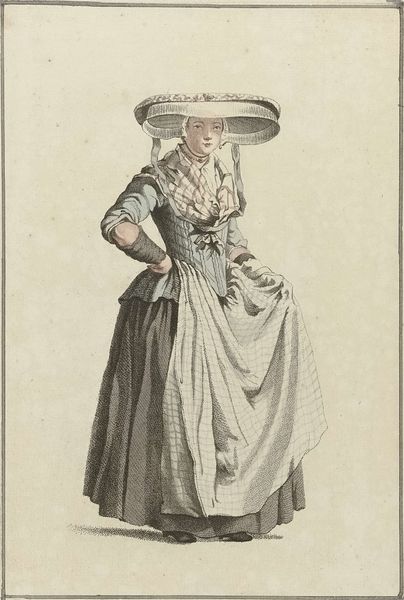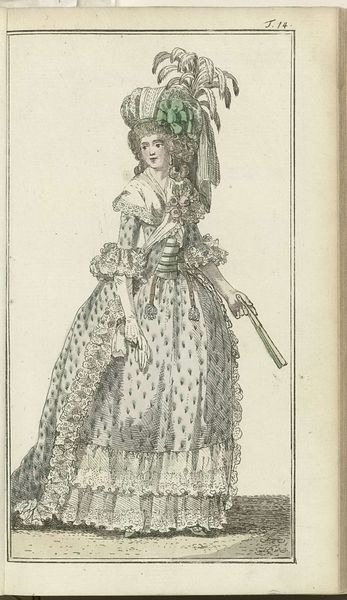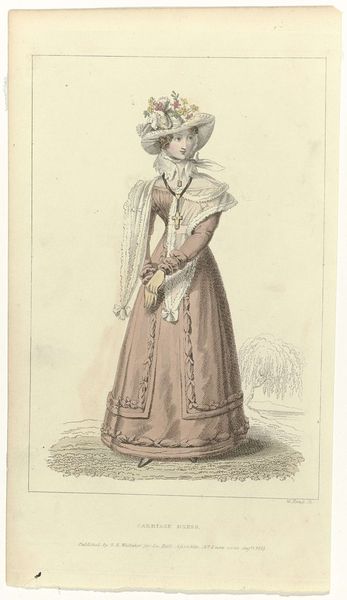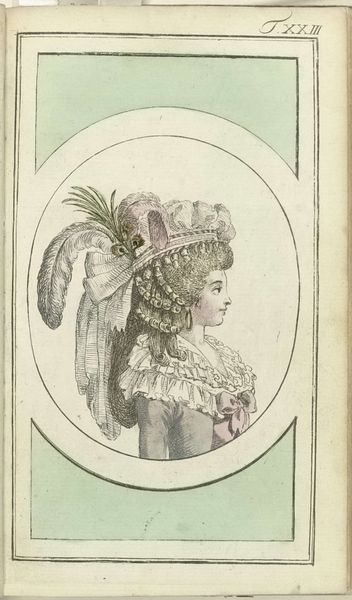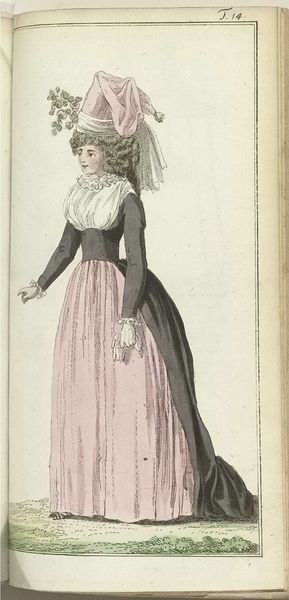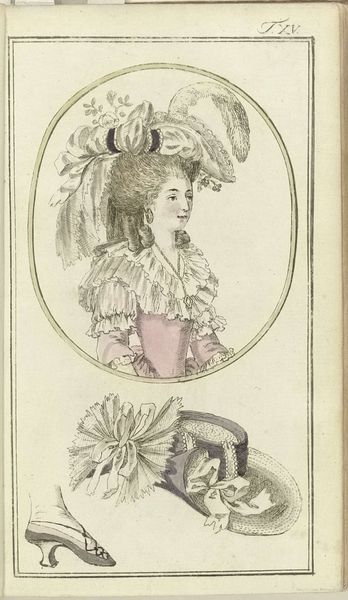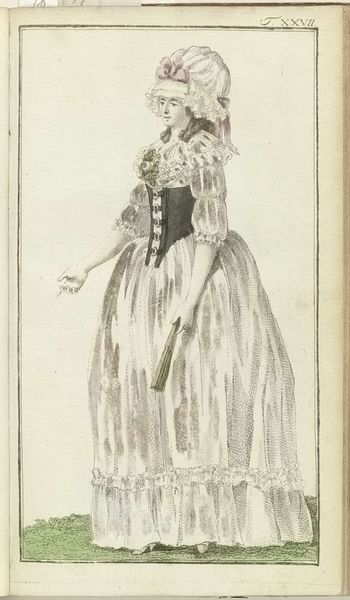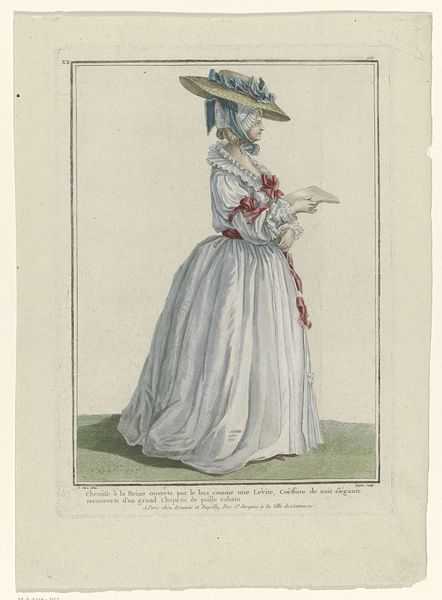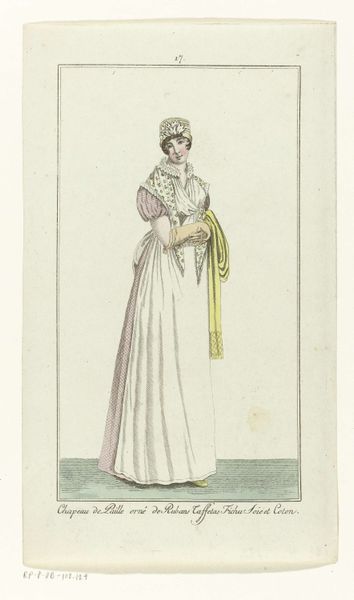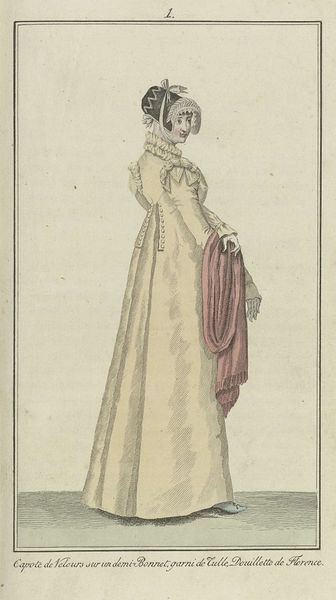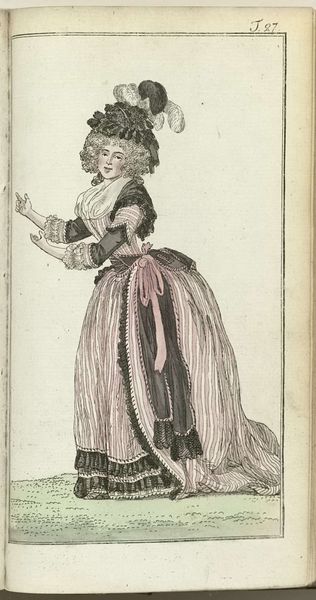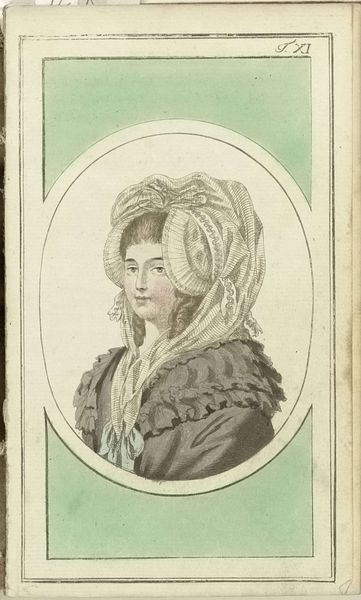
Copyright: Rijks Museum: Open Domain
This is a plate from Friedrich Justin Bertuch’s *Journal des Luxus und der Moden*, from 1786. Here, the extravagant feathered hat is not merely an accessory but a potent symbol. Feathers in headwear have signified power and status across cultures, from ancient Egyptian headdresses to indigenous tribal regalia. In 18th-century Europe, feathers reached an apex of fashion, reflecting a society obsessed with display and social hierarchy. Consider how this differs from a Greek depiction of Hermes, where feathered sandals symbolize swiftness and divine connection. Yet, in both contexts, feathers elevate—literally and figuratively—the wearer. This impulse to adorn oneself with feathers speaks to a deep, perhaps subconscious, desire to transcend the mundane. The collective memory of feathered deities and powerful rulers subtly informs our perception, engaging viewers on a deep level. The feathered hat, therefore, becomes a charged emblem. Each plume whispers tales of transformation and aspiration. It's a cyclical progression, as feathers return in new forms, constantly reshaped by cultural winds.
Comments
No comments
Be the first to comment and join the conversation on the ultimate creative platform.
